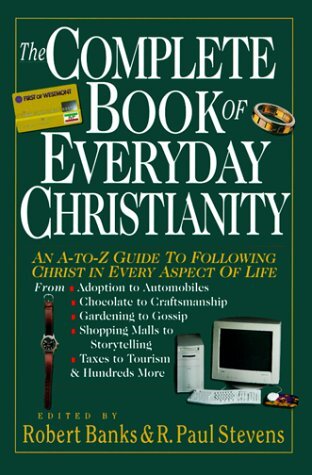Drugs
Book / Produced by partner of TOW
When you think of drugs, what comes to mind? Do you think of heroin, cocaine, marijuana—the hard, illegal drugs? Do you think of more commonly used, legal drugs like alcohol, nicotine and caffeine? What about prescribed drugs like Valium, Ritalin and lithium and nonprescription drugs like laxatives, sedatives, analgesics and weight-control agents? Do you think primarily of drug use or abuse? Do your images of drugs emphasize a particular age, gender or ethnic grouping?
What Are Drugs?
Many believe that drugs like heroin and cocaine are at the heart of the drug problem because they are illegal, powerfully addictive and personally ruinous. Yet their use is minor compared to legal drugs like alcohol and tobacco. Millions of Americans are problem drinkers, and tens of thousands of deaths are directly attributed to alcohol each year. Furthermore, alcohol is considered a factor in most fatal car accidents, homicides, suicides and child abuse cases. Consider as well the harmful effects of tobacco with over 50 million smoking Americans, many of whom will succumb to lung cancer, emphysema or other ailments. One should also consider the negative effects resulting from prescription and nonprescription drugs that are sufficient to hospitalize over 1.5 million Americans each year.
A drug is any substance that can influence one’s mind, body or emotions and, when misused, can harm oneself or others. Most people use drugs for some purpose, and given that our bodies manufacture drugs like endorphins and adrenaline, everyone is a drug user. Our society clearly has a love-hate relationship with drugs—sending mixed messages of benefit and harm. We advertise the potential harm of drugs and the importance of just saying no. Yet we glorify celebrities and sports figures who model drug use as a means of popularity and success. One segment of society seeks to ban cigarette vending machines. Another segment rushes to paste colorful cigarette posters and decals at children’s eye level near elementary and junior-high schools. Drug abuse shakes the very foundations of our society by negatively influencing our homes, our schools, our political and law enforcement systems, and our economy.
Who Uses Drugs?
Although everyone uses some form of drug, use and abuse vary by such factors as gender, age, and cultural and ethnic background. For example, men of all ages are more apt to use and abuse alcohol and most illegal drugs. Women are more apt to use prescription and nonprescription drugs—especially sleeping pills, tranquilizers and analgesics. Late childhood and adolescence are the time for experimenting with tobacco and alcohol. Indeed, if a person reaches age twenty-one without experimenting with alcohol or tobacco, he or she is unlikely ever to use them or other dangerous drugs (Kandel and Logan). Although the elderly represent 10 percent of the population, they account for 25 percent of the use of prescribed drugs. Racial, ethnic and socioeconomic factors are associated with particular forms of drug use. For example, Native Americans have higher rates of alcoholism than do Asian-Americans. White college students are more apt to use cocaine, marijuana and hallucinogens than are black or Hispanic students. Whereas cocaine is the drug of choice for the affluent, problem drinking reaches its highest levels among shiftworkers and the unemployed.
Why Do People Use Drugs?
Attempts to seek a single cause for drug use and abuse are futile. The causes of drug abuse vary with the type of drug and involve interactions of biological, psychological, sociocultural and spiritual conditions. However, four major reasons or risk factors for substance abuse have been identified: personality, family, friends and crises (Newcomb, Maddahian and Bentler).
First, those who are angry, impulsive or depressed or who have achievement problems are more apt to abuse drugs. Second, individuals whose family relationships are distant, hostile or conflicted, whose parents use or abuse drugs or whose parents are permissive, ignoring or rejecting will more often abuse drugs. Third, those who abuse drugs have friends and peers who use or tolerate the use of drugs. Finally, a person is more apt to abuse drugs when in transition or crisis, for example, when experiencing problems with school, family or romantic relationships or during times when questioning values or religious commitment.
What Can Be Done to Limit Drug Abuse?
Strategies to curtail drug abuse generally focus on limiting supply or demand. It is popular to wage supply-side war on the sale and distribution of illegal drugs. However, strategies that focus on the demands of users are more promising. If we consider the factors that put people at risk for drug abuse, there are several logical strategies. For example, as we raise an individual’s self-esteem, promote meaningful achievement, improve family life and provide safer alternatives for gratification, escape or relief, we help to mitigate drug abuse. Also, prevention is definitely preferable to intervention or postvention. Children need to receive helpful skills and information before they develop drug habits and dependencies that are difficult to break.
Thinking Christianly About Drug Use and Abuse
A Christian should view drugs in the context of God’s creation of human persons affected by the Fall, redeemed by Christ and patiently sanctified by the Holy Spirit. This involves integrating a comprehensive biblical view with what God enables us to learn through inquiry and observation.
In Genesis 1:28-31 we read that God blessed woman and man in connection with the created order and called the whole relationship “very good.” In other words, God created us with needs and created elements in our environment to meet those needs. Undoubtedly our human capacities to explore and develop drugs like analgesics, allergy relief agents, antibiotics and laxatives are part of God’s creational design. Yet we must struggle to discern proper and improper uses for the drugs we discover. Some drugs should not be used at all, some are good only in moderation, some should not be used too early in life, and some are intended for good but produce great harm (for example, thalidomide). One might also question whether instant chemical relief is preferable to building character through exploring and coping with root causes of anxiety, depression or pain.
The major goal of the Christian is not the pursuit of self-interest but the well-being of all people and the glory of God. Short of complete abstinence from drugs, perhaps a good general principle is to consider the personal results of drug-related activities in light of the works of God’s Spirit and the works of the flesh. The work of the Spirit is to produce such qualities as love, joy, peace, patience, kindness, goodness, faithfulness and self-control (Galatians 5:22-23). Does a particular form of drug use help to develop or maintain such qualities, not just as transitory personal emotions but as concrete actions in our relationships? Does another form of drug use associate with works of the flesh such as fornication, uncleanness, enmity, strife, jealousy, wrath and envy (Ephes. 5:19-20)? We are to love God with all our heart, mind, soul and strength (Mark 12:30). Does drug use open a person’s heart to God, clear her mind, deepen her relationships with others and increase her strength? Or does the use of a given drug harden a person’s heart, cloud his thinking, close him in on himself or dull his reactions?
A Personal Account
Drugs are allegedly involved in 60 percent of all child abuse cases. During the summer I direct a Christian camp for six- to twelve-year-old children who have been removed from their homes due to life-threatening conditions of abuse, abandonment or neglect. In my work with social welfare administrators, caseworkers, foster parents and children, I see many ways in which child abuse and neglect are linked with drug use.
Victimization for many of these children begins in prenatal life when indiscriminate use of drugs and alcohol during pregnancy condemns some children to a “bio-underclass”—children whose physiological damage and underprivileged social position may doom them to a life of inferiority (Rist). Some children are removed from their families and placed in foster care because one or both parents are incarcerated for drug-related crimes. Drug abuse may shatter the lives of some parents to the extent that effective supervision of and provision for their children are severely compromised. Parents under the influence of alcohol or other drugs may torment, batter or sexually exploit their own children. A cigarette may ease a parent’s frustration but may also be used to inflict telltale circular burns on a child’s arms, legs or buttocks.
I see “parentified” children, that is, children who have not been allowed to have a childhood because they are prematurely exposed to adult activities or because they are left to supervise and protect their younger siblings. One such child I know drinks straight black coffee four times each day because it “helps me with my worries.” As many as half of the children who come to camp take prescribed medications for hyperactivity, depression and anxiety and for forms of withdrawal, dissociation and psychosis. And of course, the stress of working with these troubled children sends many a counselor or staff person to the nurse in search of an aspirin. Child abuse is just one example of how the consequences of drug and alcohol abuse reach deep within the fabric of Western society.
Summary
One child may be devastated by her father’s indiscretions while under the influence of too much alcohol. Another child’s aberrant development is greatly assisted by regular use of a prescribed drug. One may consume a moderate amount of a fine wine at a wedding reception while remaining clear-headed and deeply appreciative of God’s gifts of love, friendship and commitment. Another individual’s hallucinogenic trip may lead her to think of herself as God. The drunken stupor that clouds one’s perception and judgment, taxes one’s liver and alienates one from family, friends and work is anything but a proper state for any human being, let alone a follower of Christ. There are no simple answers that hold for all forms of drug use and abuse. We must use biblical truth and the minds God gives us to discern proper from improper forms of drug use.
» See also: Addiction
» See also: Advertising
» See also: Drivenness
» See also: Healing
» See also: Health
References and Resources
D. Kandel and R. Logan, “Patterns of Drug Use from Adolescence to Young Adulthood: I. Periods of Risk for Initiation, Continued Use and Discontinuation,” American Journal of Public Health 74 (1984) 660-66; M. Newcomb, E. Maddahian and P. Bentler, “Risk Factors for Drug Use Among Adolescents: Concurrent and Longitudinal Analyses,” American Journal of Public Health 76 (1986) 525-31; M. Rist, “The Shadow Children,” The American School Board Journal, January 1990 19-24; J. Van Wicklin, “Substance Abuse,” in Christian Perspective on Social Problems, ed. C. DeSanto, Z. Lindblade and M. Poloma, 2d ed. (Indianapolis: Wesley, 1992) 376-97.
—John F. Van Wicklin





